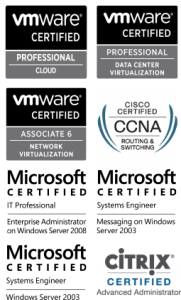Scenario
You have noticed that it takes ages for client devices – like PCs, VOIP phones, even Xboxs – to get an IP address via DHCP. Sometimes an IP address is not given at all.
Here is how to speed up the DHCP process on Cisco switches and routers:
Tips, thoughts and notes from the world of IT
You have noticed that it takes ages for client devices – like PCs, VOIP phones, even Xboxs – to get an IP address via DHCP. Sometimes an IP address is not given at all.
Here is how to speed up the DHCP process on Cisco switches and routers:
I was onsite with a customer the other week, and noticed that they installed print drivers individually on each PC to print direct to the printer. Not good, as the maintenance and management must have been a nightmare; the customer was a medium-sized school.
Usually I see shared printers being used, but better still are shared printers deployed via Group Policy. I started preaching to their IT guy about the wonders of centrally managed printing, and decided to set this up for him.
Unfortunately, after a while I gave up as I couldn’t find the necessary pushprinterconnections.exe file I needed for the solution to work with their Windows XP clients. It’s usually in %WINDIR%\System32 on the server, but not this time.
Here’s a link to the file if you ever struggle finding it too: pushprinterconnections
Instructions on Deploying Printers via GPO can be found here: http://technet.microsoft.com/en-us/library/cc722179(v=ws.10).aspx
You have a Main Office and several Branch Offices in your company. You use proxy servers (like Squid) in every office to save bandwidth and increase browsing performance.
However, your mobile users often call in reporting they cannot access the internet when outside the office.
You once again remind them how to untick the “Use a proxy server for your LAN” setting in Internet Explorer; all the while dreaming of a better solution.
Here’s one such solution:
For me, it took about an hour to restore, reboot several times, and be on the desktop ready to configure and join to the domain.
I like using the Reliability Monitor to easily show the stability of the server over time. However, sometimes no data is shown at all:
Here’s how to fix it:
You have restarted your Exchange server after applying some updates, and now your BlackBerry users are complaining that emails are not coming through. Even though emails they send from their BlackBerrys seem to send fine, the recipients are not receiving them either.
Restart the BlackBerry Enterprise Services (BES) server or individual services.
What happens after rebooting an Exchange server is that BES loses the MAPI connections, and cannot reconnect when the Exchange server comes back online.
Read more here to automate this process: http://blog.mohsinabbas.com/2011/02/16/bes-services-to-restart-automatically-after-exchange-reboot/
To find out the version and build number of Exchange 2007/2010, you can do one of the following:


This will give you the major version and service pack version numbers – in my case it major version 8 (aka Exchange 2007) and Service Pack 3.
To find out the Update Rollup version, navigate to Control Panel > Programs > View Installed updates on your Exchange Server:
I read an excellent article on how to populate the Local Administrators group via Group Policy Objects (GPO): http://www.grouppolicy.biz/2010/01/how-to-use-group-policy-preferences-to-secure-local-administrator-groups/
However, after following the instructions to the letter, I could only populate the Local Administrators group with the builtin\administrator user account; the other groups I specified were simply ignored.
Here’s how I fixed the issue:
You need to confirm if Group Policy Preference Client Side Extensions are installed for Windows XP, but nothing shows up in Add/Remove Programs.
You’re sure that you have the right update (http://www.microsoft.com/download/en/details.aspx?id=3628), but Group Policy Preferences are not working.
Here’s how you can confirm Preference CSEs are installed:
You have shiny new Win7 PCs for your users, but several applications are not compatible with Win7. You’ve tried every trick in the book (including swearing) to make the applications work, but still no joy.
The answer is to use XP Mode, which is free if you have Win7 Professional or above.
XP Mode is great, but can also be a pain to get working happily on your domain. Here’s what I did:

Copyright © 2019 · Enterprise Child Theme on Genesis Framework · WordPress · Log in